The largest representative of arthropods is the coconut crab or palm thief.
Seeing this amazing arthropod, anyone faint of heart will shudder with horror and surprise - after all, there is nothing in the world more interesting and, at the same time, more terrible than the coconut crab. In any case, among arthropods - after all, he is rightfully considered their largest representative.
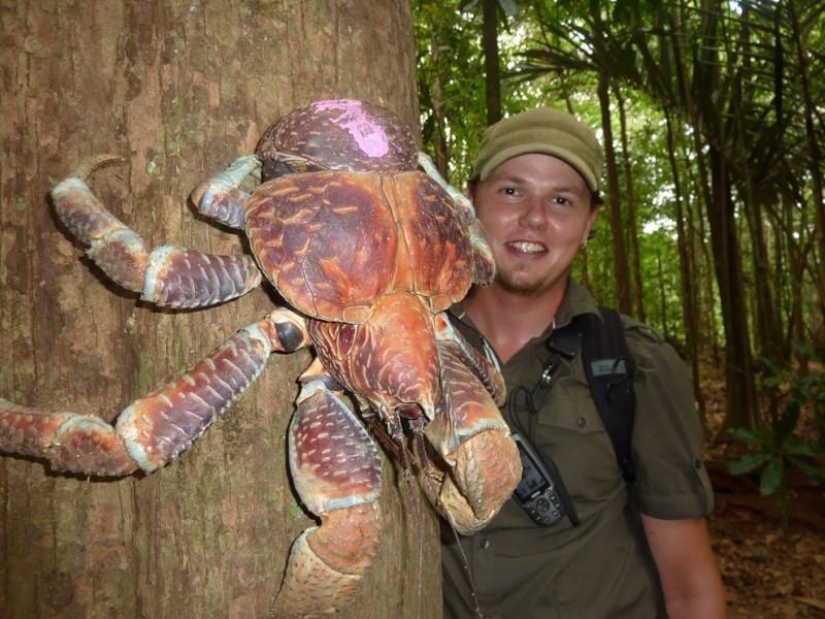
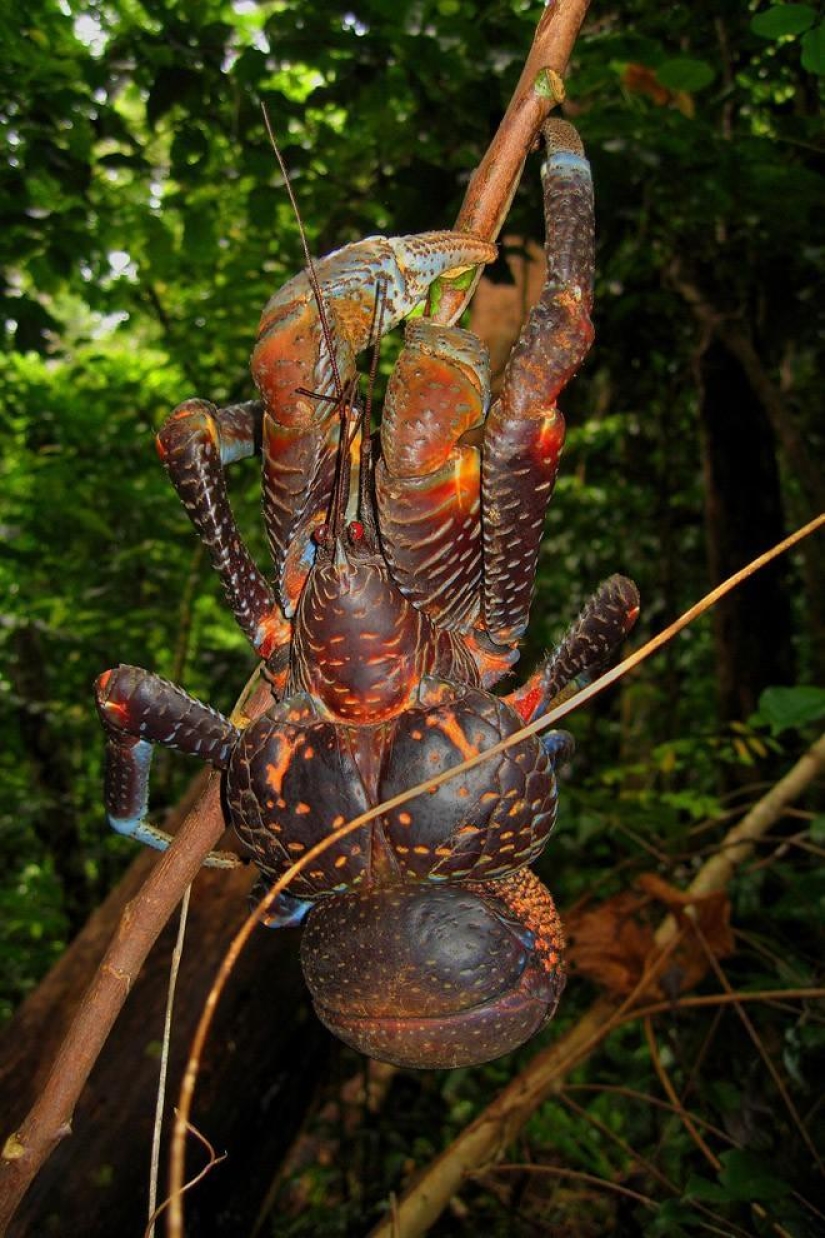
The coconut crab has many other “names”: for example, thief crab or palm thief - after all, this strange arthropod actually steals its prey. Travelers of past centuries who visited the islands located in the Western Pacific Ocean and the Indian Ocean talk about how the coconut crab hides from prying eyes in the dense greenery of palm trees in order to then suddenly grab its prey lying right under a tree or nearby From him.
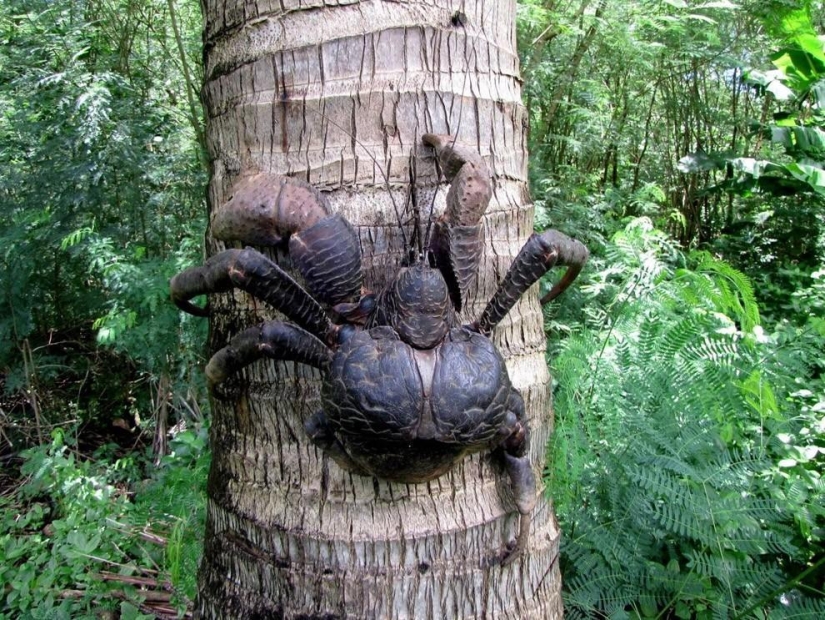 The coconut crab (lat. Birgus latro) is not actually a crab at all, despite its striking resemblance to the arthropod relative mentioned in the name. This is a land hermit crab, belonging to the species of decapod crayfish.
The coconut crab (lat. Birgus latro) is not actually a crab at all, despite its striking resemblance to the arthropod relative mentioned in the name. This is a land hermit crab, belonging to the species of decapod crayfish.
Strictly speaking, calling the palm thief a land arthropod is also a stretch, since part of its life is spent in the sea elements, and even tiny crustaceans are born in the water column. Newborn babies with a defenseless soft abdominal cavity busily crawl along the bottom of a reservoir in search of a reliable home, which can serve as a nut shell or an empty mollusk shell.
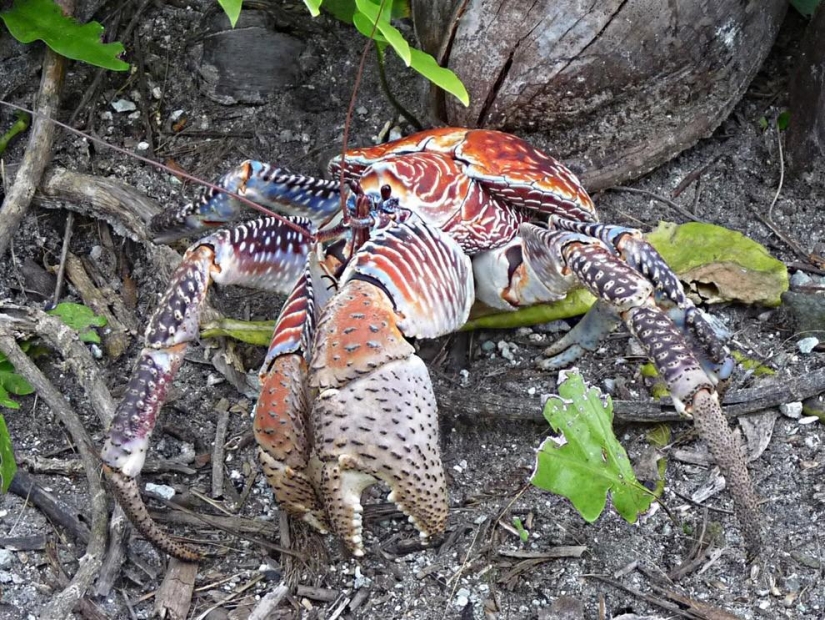 In “childhood,” birgus latro is not too different from a hermit crab: it drags its shell around with it and spends almost all its time in water. But once it emerges from the larval state and leaves the water, it is no longer able to return there, and at some point, even carry a shell-house with it. Unlike the abdomens of hermit crabs, its abdomen is not an Achilles heel and gradually hardens, and the tail curls under the body, protecting the body from cuts. Thanks to special lungs, he begins to breathe out of water.
In “childhood,” birgus latro is not too different from a hermit crab: it drags its shell around with it and spends almost all its time in water. But once it emerges from the larval state and leaves the water, it is no longer able to return there, and at some point, even carry a shell-house with it. Unlike the abdomens of hermit crabs, its abdomen is not an Achilles heel and gradually hardens, and the tail curls under the body, protecting the body from cuts. Thanks to special lungs, he begins to breathe out of water.
In truth, most legends noted precisely this feature - the first Europeans who arrived on the islands described coconut crabs as creatures hiding in the foliage of trees with long claws that suddenly reached out to the ground and captured prey, including sheep and goats. Scientists have confirmed that birgus latro has great strength and can lift up to 30 kg of weight. However, they found out that the crab uses its abilities to drag cargo from place to place, preferring to feed on dead animals, crabs and fallen fruits.
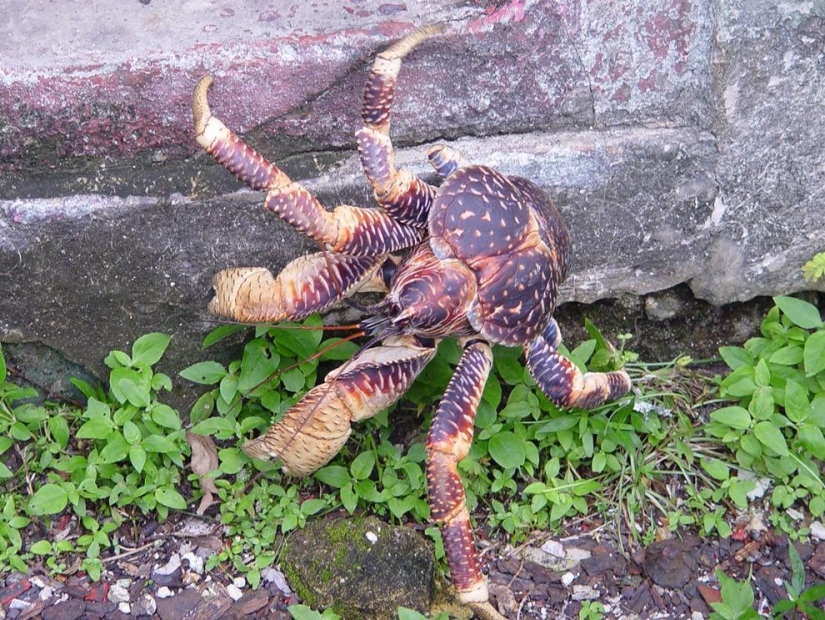 How do crayfish manage to exist equally comfortably both in water and on land? It turns out that wise nature provided them with two breathing instruments at once: lungs, ventilated by air on the surface of the earth, and gills, allowing them to breathe under water. But over time, the second organ loses its functions, and palm thieves have to completely switch to a terrestrial lifestyle.
How do crayfish manage to exist equally comfortably both in water and on land? It turns out that wise nature provided them with two breathing instruments at once: lungs, ventilated by air on the surface of the earth, and gills, allowing them to breathe under water. But over time, the second organ loses its functions, and palm thieves have to completely switch to a terrestrial lifestyle.
Those wishing to meet such a miracle would have to go to the tropics - coconut crabs are found on the islands of the Indian Ocean and on some Western Pacific islands. It is not easy to see them in daylight: palm thieves are nocturnal, and in sunny times they hide in rock crevices or in sandy burrows lined with coconut fibers - this helps maintain the required level of humidity in the home.
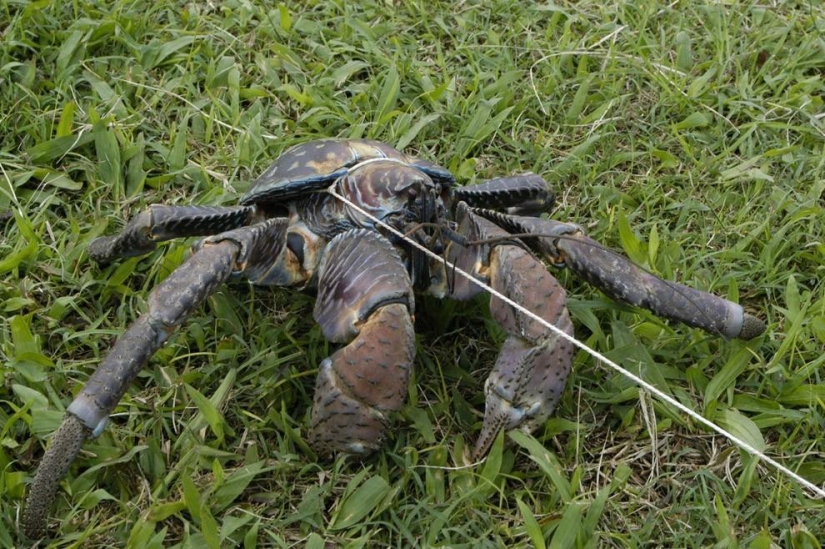 And although the version that the crayfish is capable of splitting a coconut with its front claws failed miserably, its limbs are nevertheless developed enough to nimbly climb the trunk of a palm tree or bite off a person’s phalanx of a finger. And cancer is really partial to coconuts: the nutritious pulp is the main dish on its menu, to which it owes its “coconut” name.
And although the version that the crayfish is capable of splitting a coconut with its front claws failed miserably, its limbs are nevertheless developed enough to nimbly climb the trunk of a palm tree or bite off a person’s phalanx of a finger. And cancer is really partial to coconuts: the nutritious pulp is the main dish on its menu, to which it owes its “coconut” name.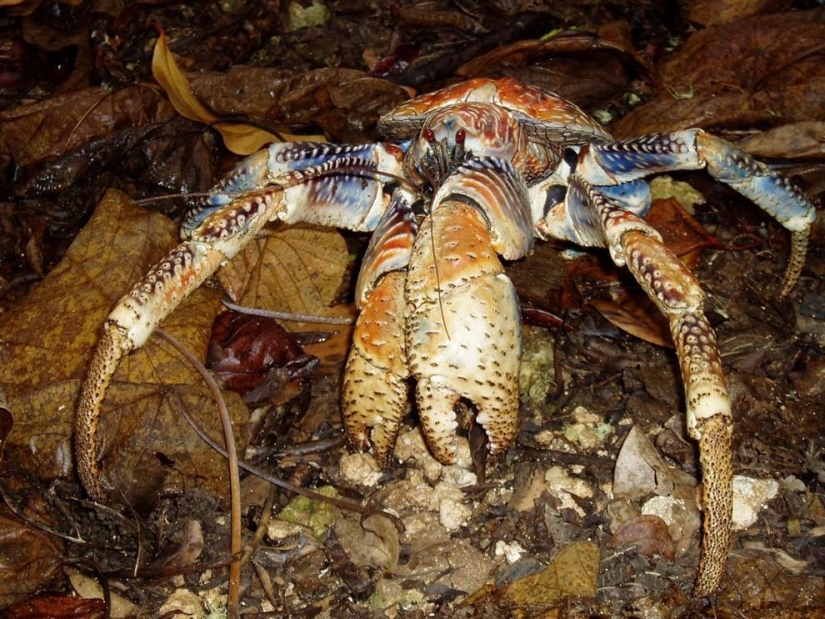 Sometimes the diet of crayfish is enriched with pandan fruits, and according to some sources, palm thieves sometimes eat their own kind. A hungry crayfish unerringly finds the nearest “restaurant”: its internal navigator is its excellent sense of smell, which leads it to the food source, even if it is many kilometers away.
Sometimes the diet of crayfish is enriched with pandan fruits, and according to some sources, palm thieves sometimes eat their own kind. A hungry crayfish unerringly finds the nearest “restaurant”: its internal navigator is its excellent sense of smell, which leads it to the food source, even if it is many kilometers away.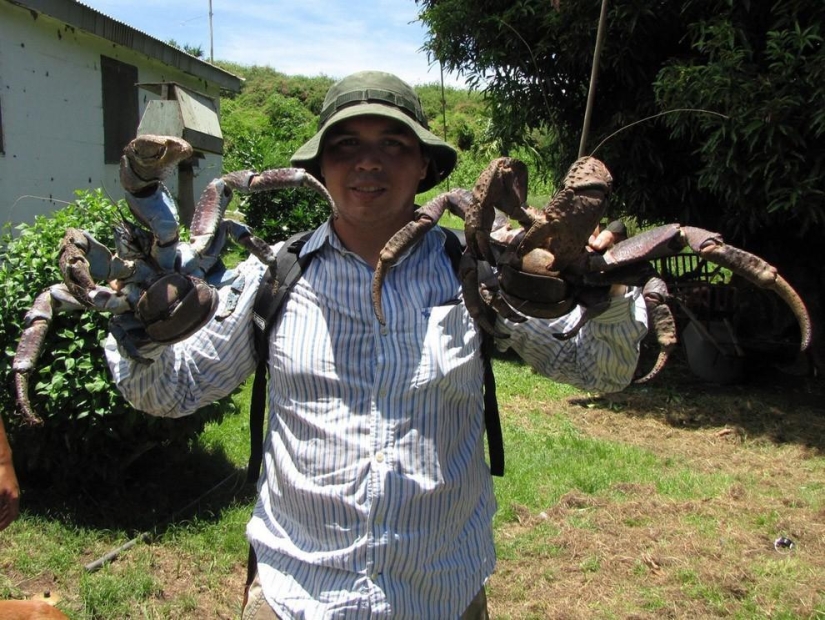 As for the “thief status” of cancer, this is due to its uncontrollable desire to drag into its hole all sorts of things that are not good - edible and not so good.
As for the “thief status” of cancer, this is due to its uncontrollable desire to drag into its hole all sorts of things that are not good - edible and not so good.
Coconut crab meat is not only considered a delicacy, but also an aphrodisiac, which is why these arthropods are actively hunted. To prevent their complete extinction, some countries have strict restrictions on the harvesting of coconut crabs.
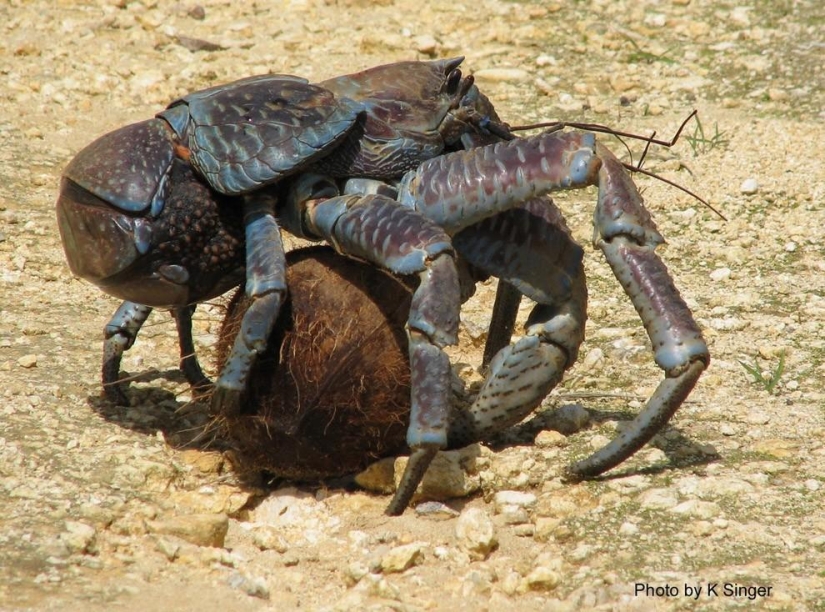 The body of the coconut crab, like that of all decapods, is divided into the front part (cephalothorax), on which there are 10 legs, and the stomach. The front, largest pair of legs has large claws (claws), and the left claw is much larger than the right. The next two pairs, like those of other hermits, are large, powerful with sharp ends, and are used by coconut crabs to travel along vertical or inclined surfaces. The fourth pair of legs is significantly smaller than the first three, which allows young coconut crabs to settle in mollusk shells or coconut shells and provide protection. Adults use this pair for walking and climbing. The last, very small pair, which is usually hidden inside the shell, is used by the females to care for the eggs and by the males for mating.
The body of the coconut crab, like that of all decapods, is divided into the front part (cephalothorax), on which there are 10 legs, and the stomach. The front, largest pair of legs has large claws (claws), and the left claw is much larger than the right. The next two pairs, like those of other hermits, are large, powerful with sharp ends, and are used by coconut crabs to travel along vertical or inclined surfaces. The fourth pair of legs is significantly smaller than the first three, which allows young coconut crabs to settle in mollusk shells or coconut shells and provide protection. Adults use this pair for walking and climbing. The last, very small pair, which is usually hidden inside the shell, is used by the females to care for the eggs and by the males for mating.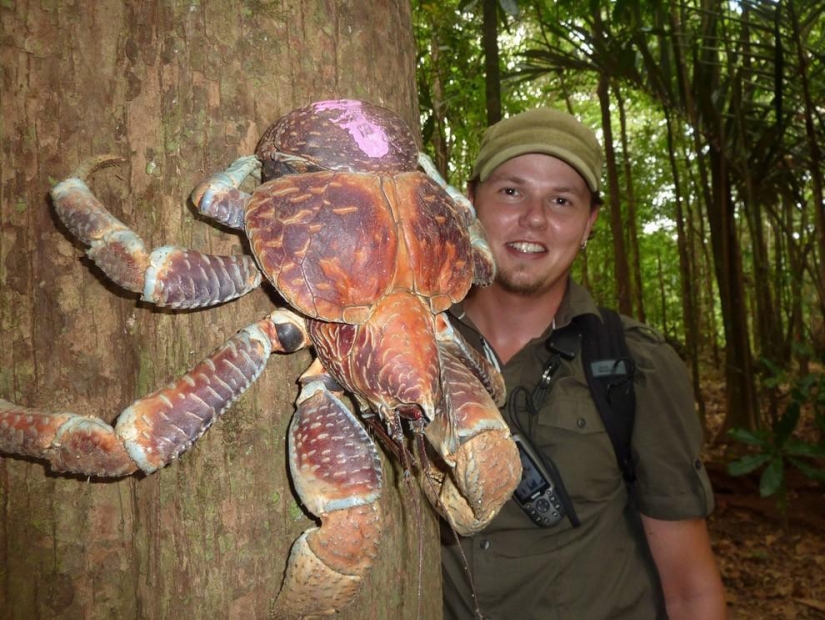 Except for the larval stage, coconut crabs cannot swim, and they will certainly drown if they remain in the water for more than an hour. To breathe, they use a special organ called gill lungs. This organ can be interpreted as a developmental stage between the gills and lungs, and is one of the coconut crab's most important adaptations to its environment. The branchial lungs contain tissues similar to those found in the gills, but are suitable for absorbing oxygen from the air rather than from water.
Except for the larval stage, coconut crabs cannot swim, and they will certainly drown if they remain in the water for more than an hour. To breathe, they use a special organ called gill lungs. This organ can be interpreted as a developmental stage between the gills and lungs, and is one of the coconut crab's most important adaptations to its environment. The branchial lungs contain tissues similar to those found in the gills, but are suitable for absorbing oxygen from the air rather than from water.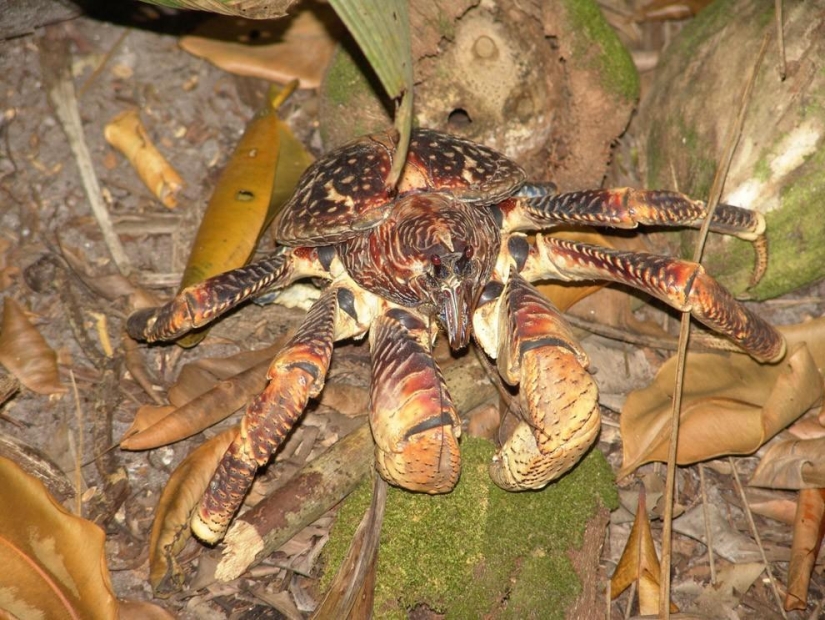 The coconut crab has a well-developed sense of smell, which it uses to find food. Like most aquatic crabs, they have specialized organs located on their antennae that detect the concentration and direction of scent.
The coconut crab has a well-developed sense of smell, which it uses to find food. Like most aquatic crabs, they have specialized organs located on their antennae that detect the concentration and direction of scent.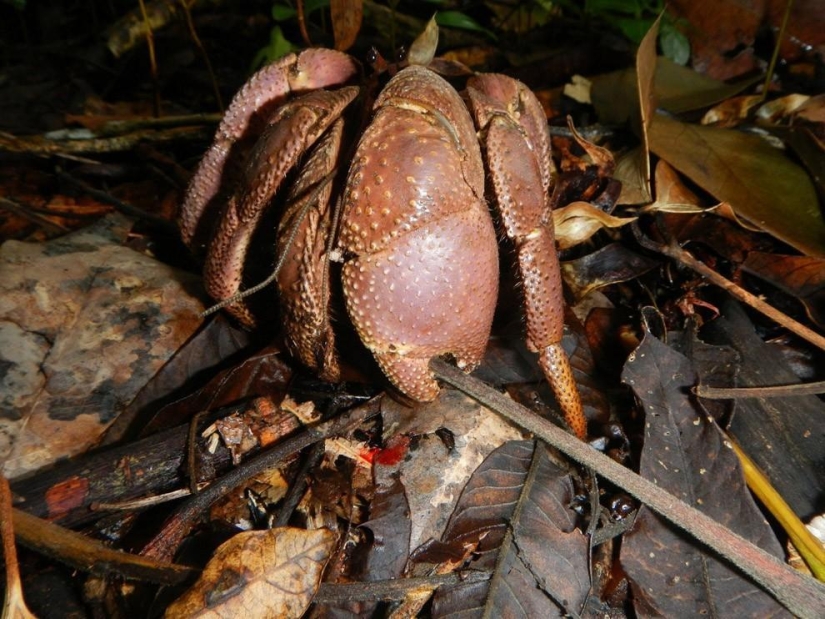 During the day, these arthropods sit out in burrows or rock crevices, which are lined with coconut fibers or leaves to increase the humidity in the home. While resting in its burrow, the coconut crab closes the entrance with one claw to maintain a humid microclimate in the burrow, which is necessary for its respiratory organs.
During the day, these arthropods sit out in burrows or rock crevices, which are lined with coconut fibers or leaves to increase the humidity in the home. While resting in its burrow, the coconut crab closes the entrance with one claw to maintain a humid microclimate in the burrow, which is necessary for its respiratory organs.
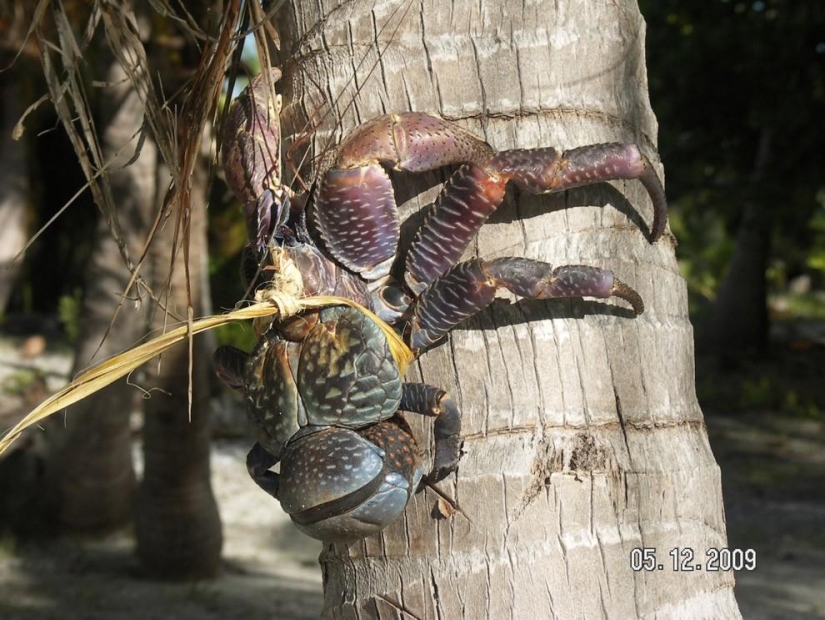
As the name suggests, this crab feeds on coconuts, and is in fact able to climb up to a height of 6 meters on a coconut tree, where it uses its powerful claws to pinch off coconuts if they are not already available on the ground. If a fallen coconut does not split when it falls, the crab will gut it for a week or even two until it gets to the juicy pulp of the nut. If the crab gets tired of this dreary work, he lifts the coconut up the tree and throws it down to make his work easier. Descending back to the ground, they sometimes fall, but without damage to their health they can survive a fall from a height of 4.5 meters. The coconut crab will not refuse other fruits, newborn turtles and carrion. They have also been observed catching and eating Polynesian rats.
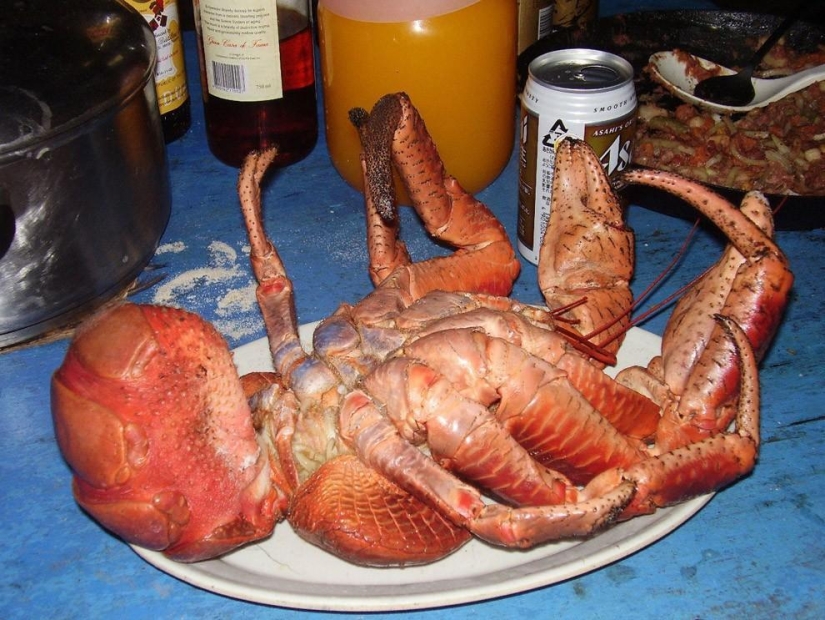
Its other name is palm thief, it received for its love of everything shiny. If a spoon, fork, or other shiny object gets in the way of a crab, you can be sure that he will certainly try to drag it into his hole.
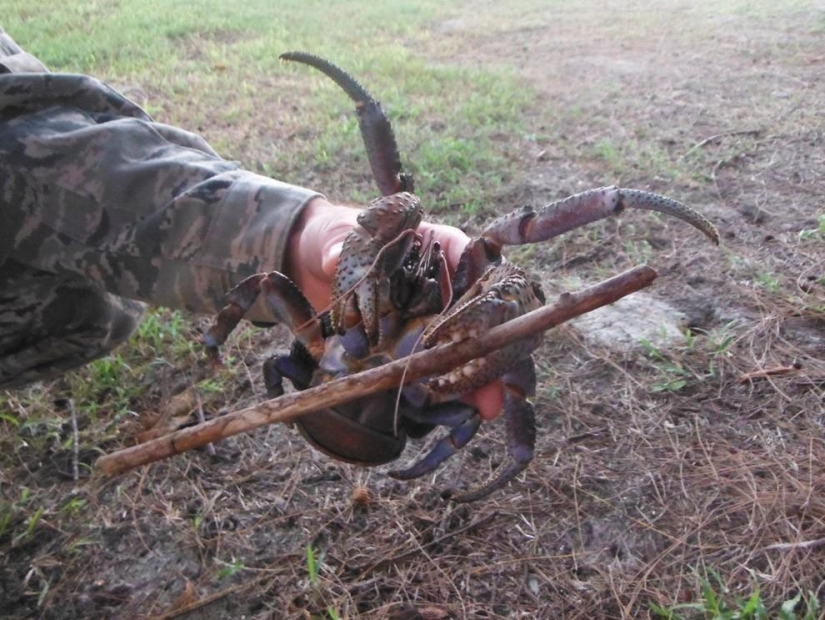
From the beginning of June to the end of August, the breeding season begins for palm thieves. The courtship process lasts long and tediously, but mating itself occurs quite quickly. The female carries fertilized eggs for several months on the underside of her abdomen. When the eggs are ready to hatch, the female goes down to the seashore at high tide and releases the larvae into the water. Over the next three to four weeks, the larvae floating in the water go through several stages of development. After 25 - 30 days, small crabs sink to the bottom, settle in the shells of gastropods, and prepare to migrate to land. At this time, babies sometimes visit land, and gradually losing the ability to breathe under water, they finally move to the main habitat. Coconut crabs reach sexual maturity about five years after hatching, but do not reach their maximum size until they are 40 years old.
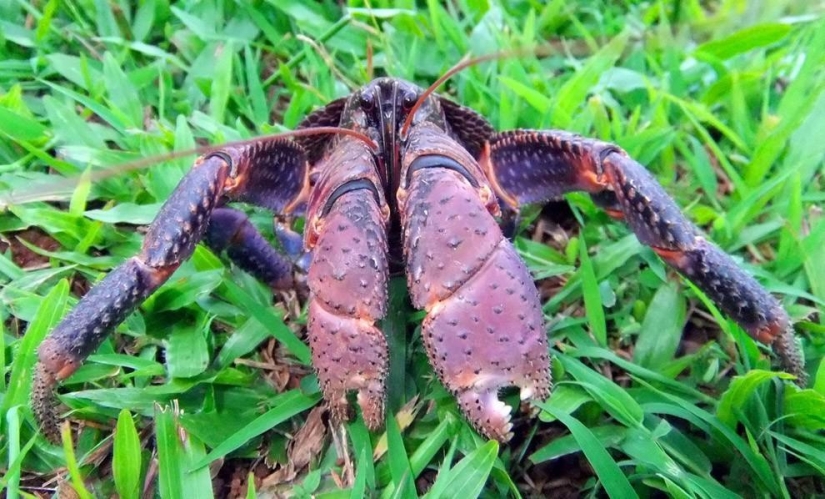
Palm thieves live in the tropics, on the islands of the Indian and western Pacific oceans. Christmas Island in the Indian Ocean has the highest population density of coconut crabs in the world.
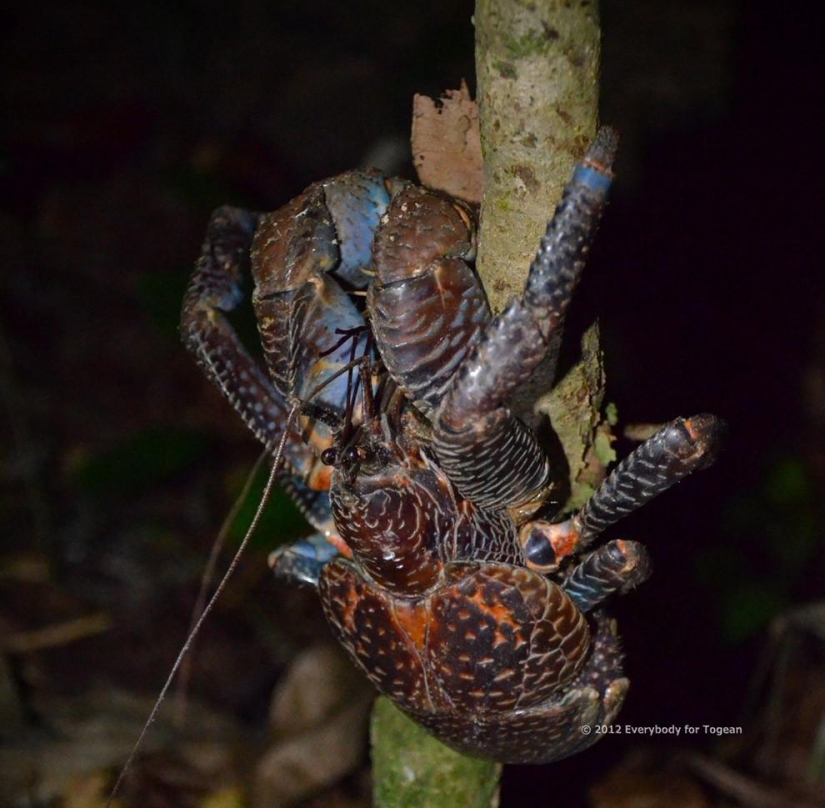
Swedish and Australian scientists have confirmed the veracity of all the stories about coconut crabs. Thus, residents of the Pacific Islands claimed that they could smell, for example, meat or ripe fruit several kilometers away. And indeed, the special baits placed by the researchers immediately attracted the attention of the thieving crabs, who nevertheless disdained the ordinary pieces of bread that ordinary crabs are greedy for.
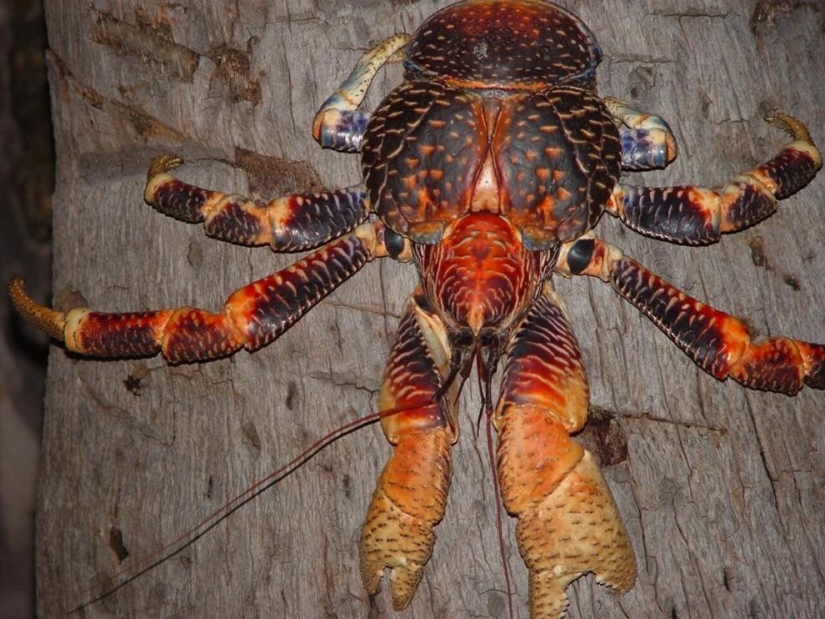
The function of a janitor is, of course, not bad and useful, however, since Birgus latro is a predominantly nocturnal creature and not very friendly, local residents are not particularly delighted when they stumble upon it. The decrease in its numbers forced local authorities to set a limit on catching birgus latro. In Papua New Guinea it is prohibited to include it in restaurant menus, on the island of Saipan it is prohibited to catch crabs with a shell less than 3.5 cm, and also from June to September, during the breeding season.
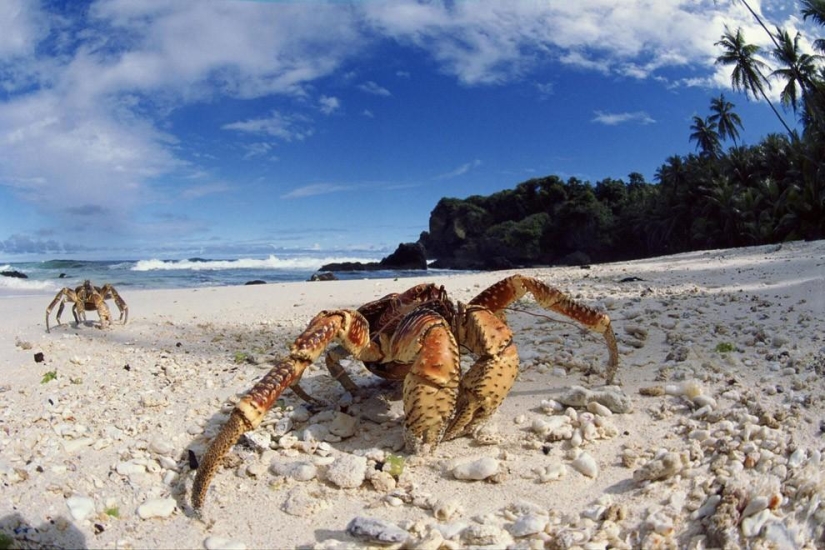
On the inner surface of the walls of the gill cavities, this land descendant of hermit crabs develops grape-shaped folds of skin in which numerous blood vessels branch. These are real lungs, allowing the use of oxygen from the air filling the gill cavities. The lungs are ventilated due to the movements of the scaphognathite, as well as due to the ability of animals from time to time to raise and lower the carapace, for which special muscles are used.
It is remarkable that the gills are also preserved, although they are relatively small in size. Removing the gills did not harm breathing at all; on the other hand, the crayfish completely lost the ability to breathe in water. The palm thief immersed in water died after 4 hours. The residual gills apparently do not function. The palm thief digs shallow burrows in the soil, which are lined with coconut fibers. Charles Darwin says that the natives on some islands select these fibers from the holes of the palm thief, which they need in their simple farming. Sometimes the palm thief is content with natural shelters - crevices in rocks, cavities in drained coral reefs, but even in such cases it uses plant material to line them, which retains high humidity in the housing.
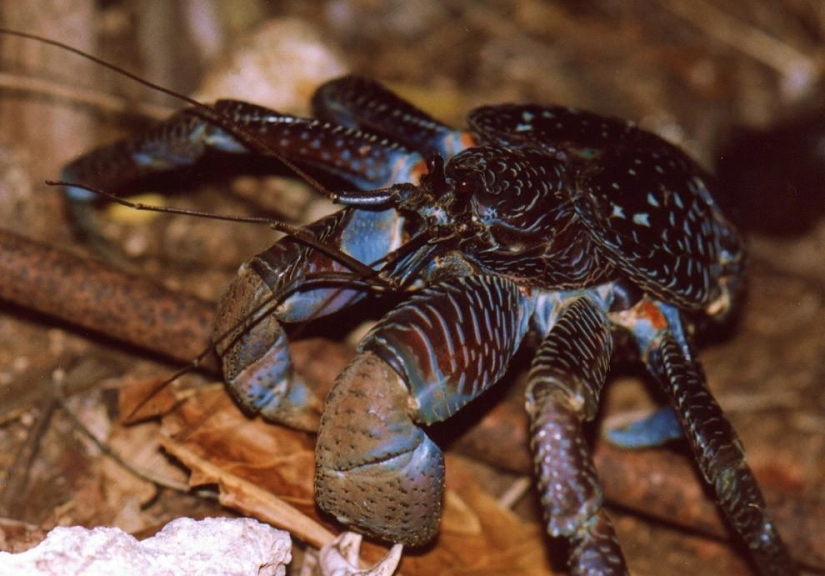
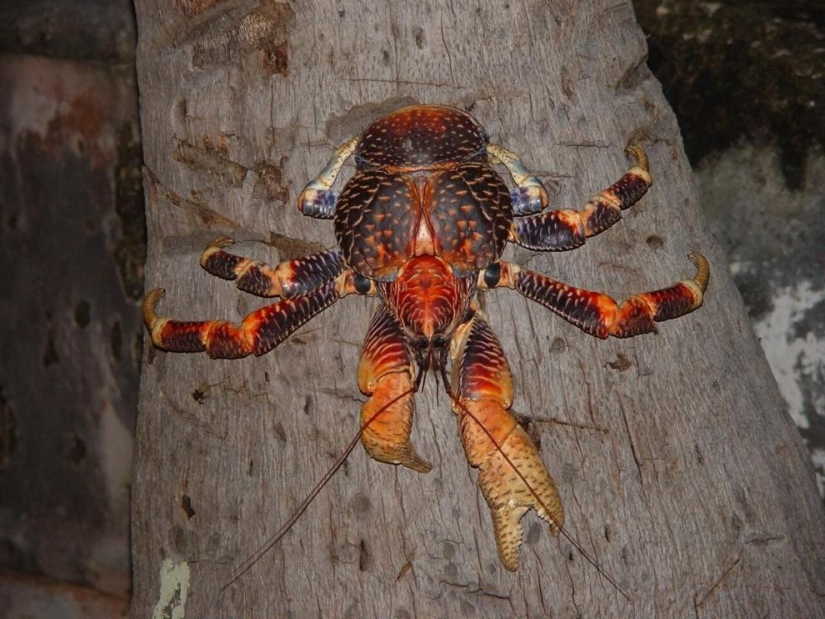
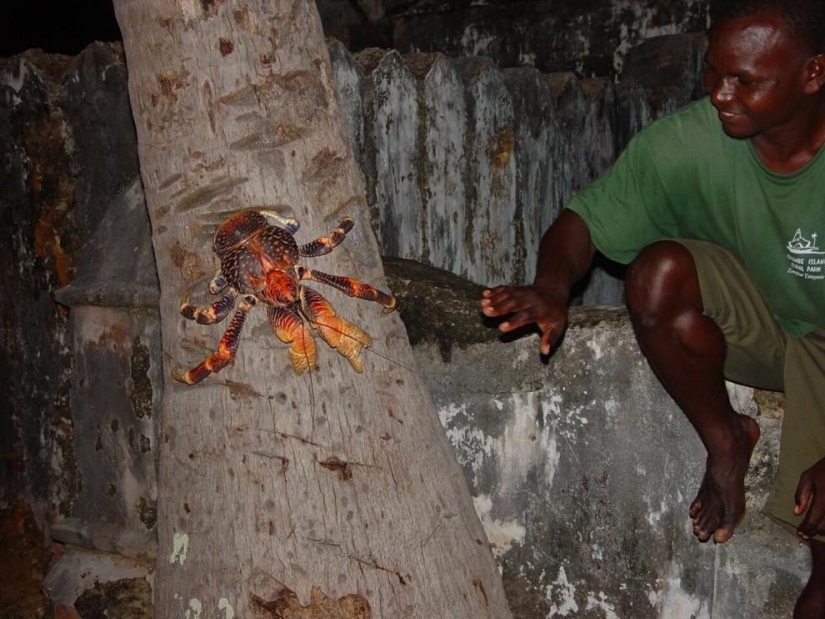
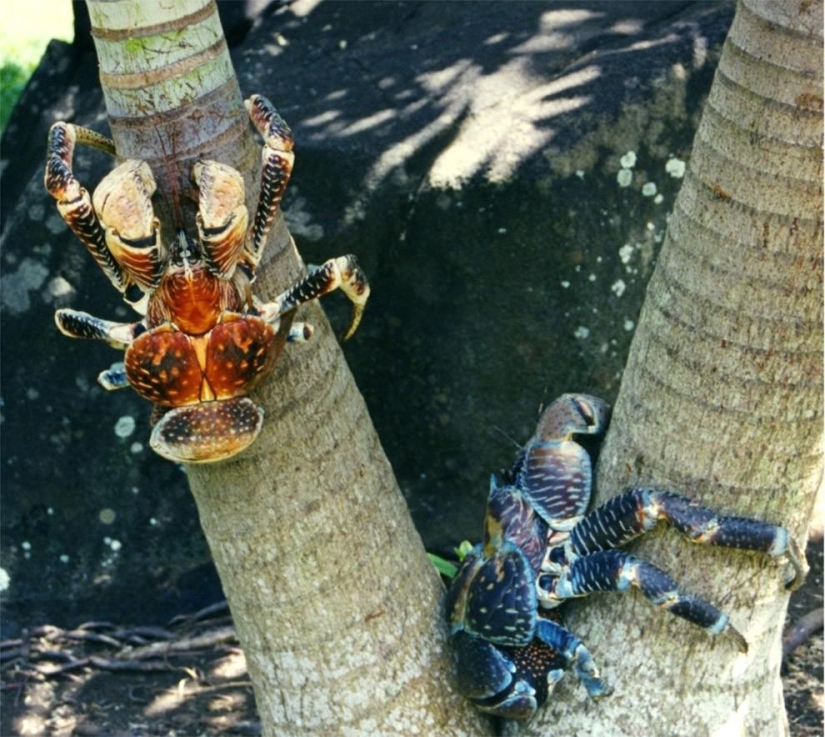
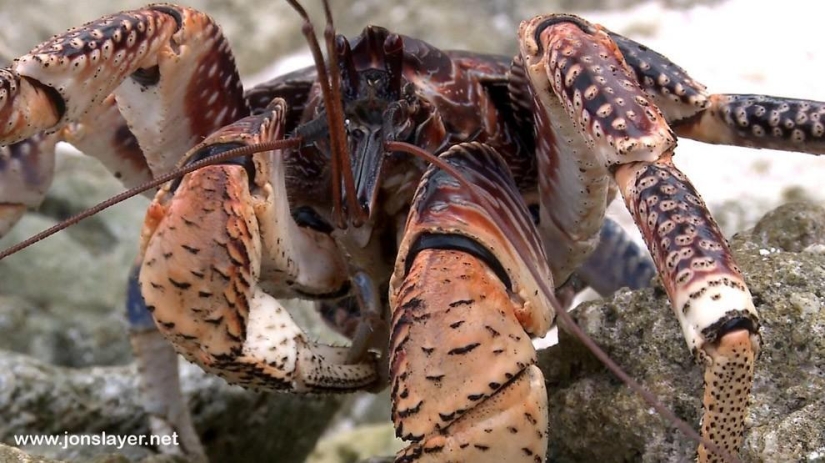
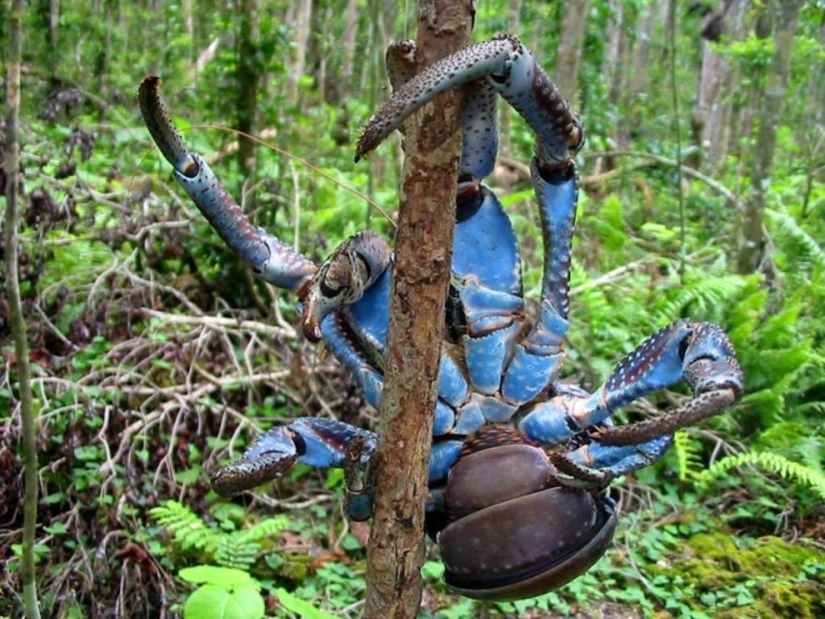
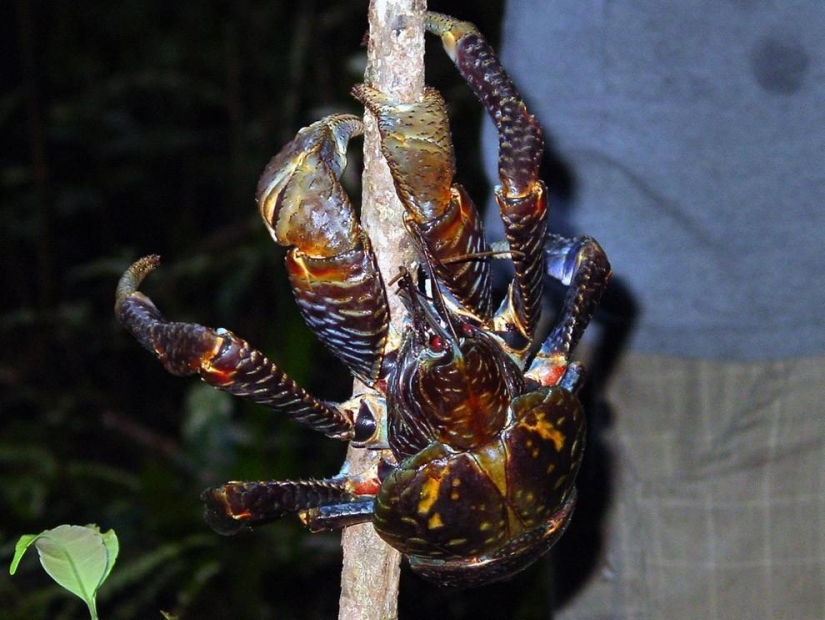
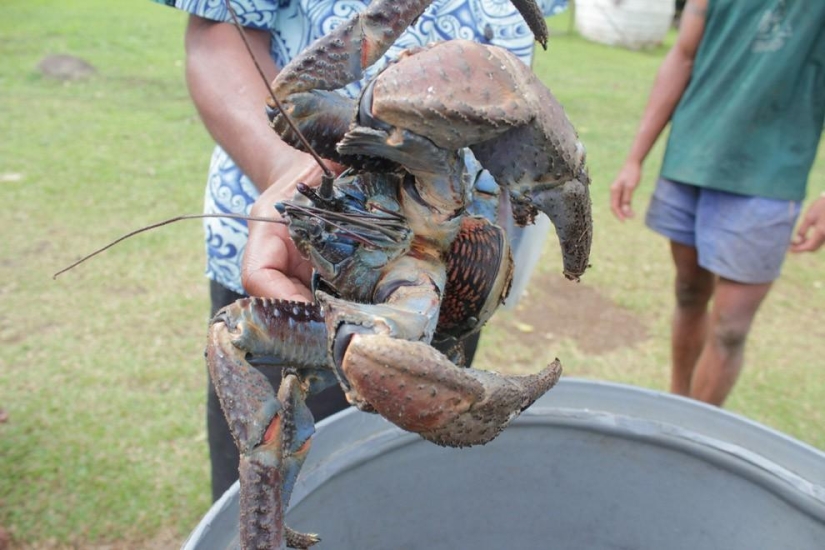
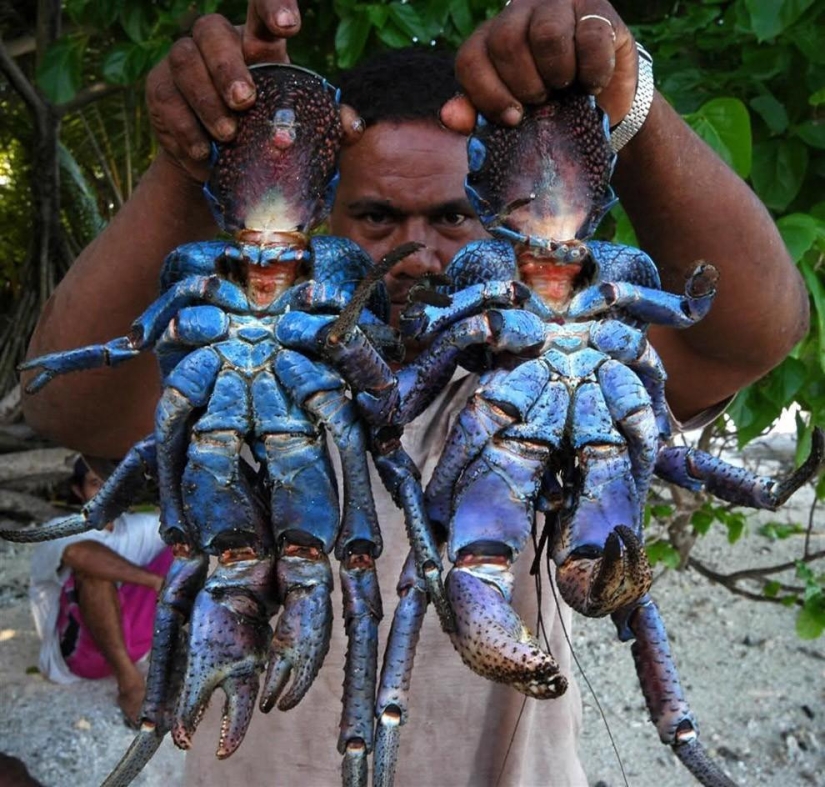
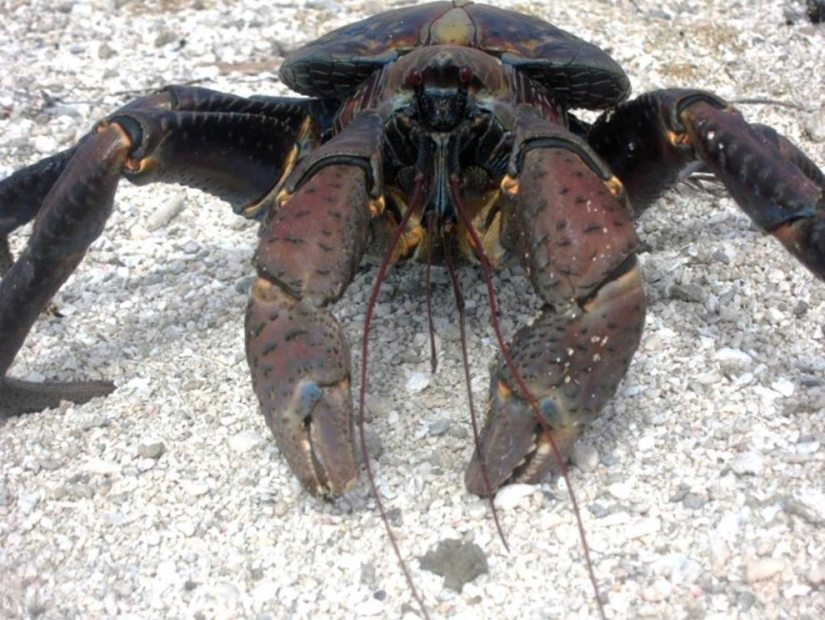
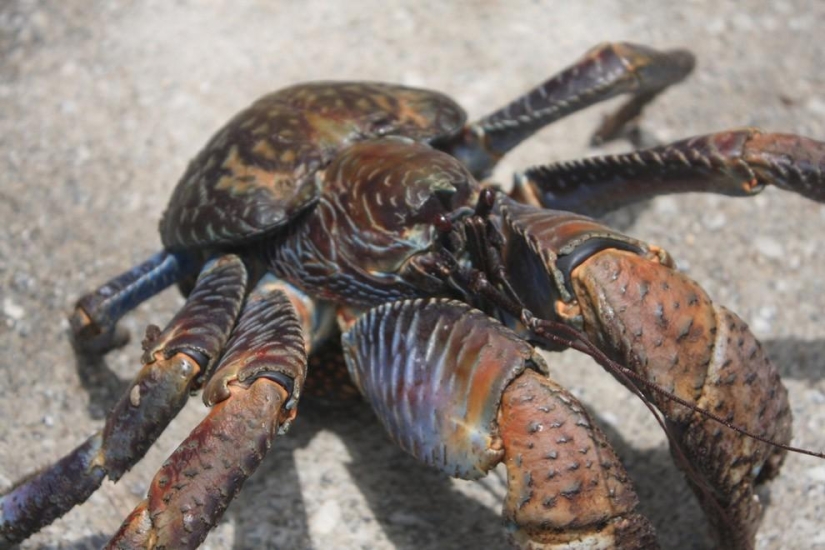
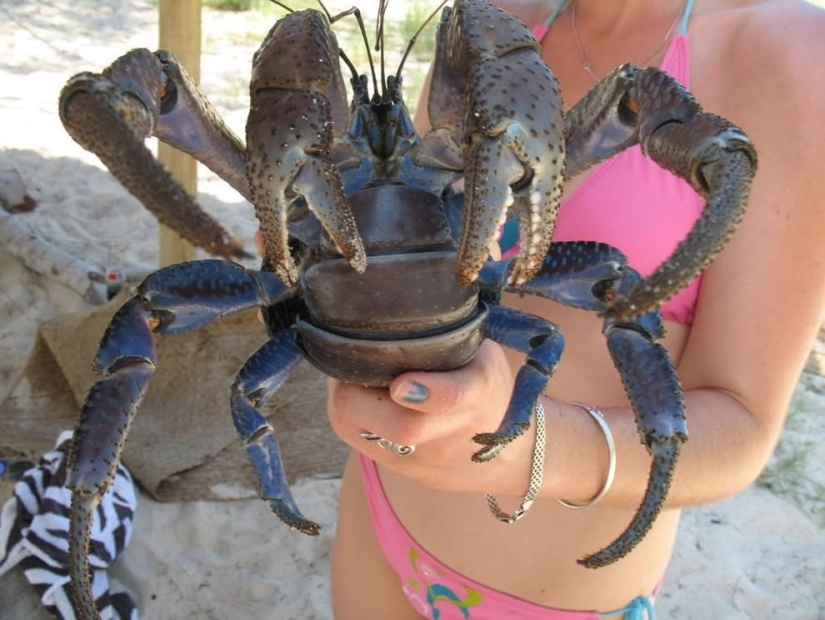
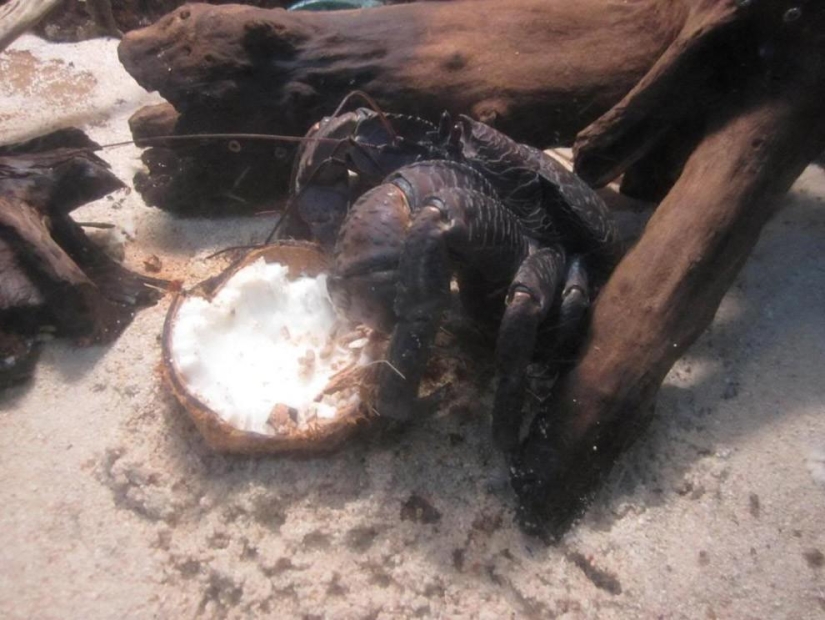
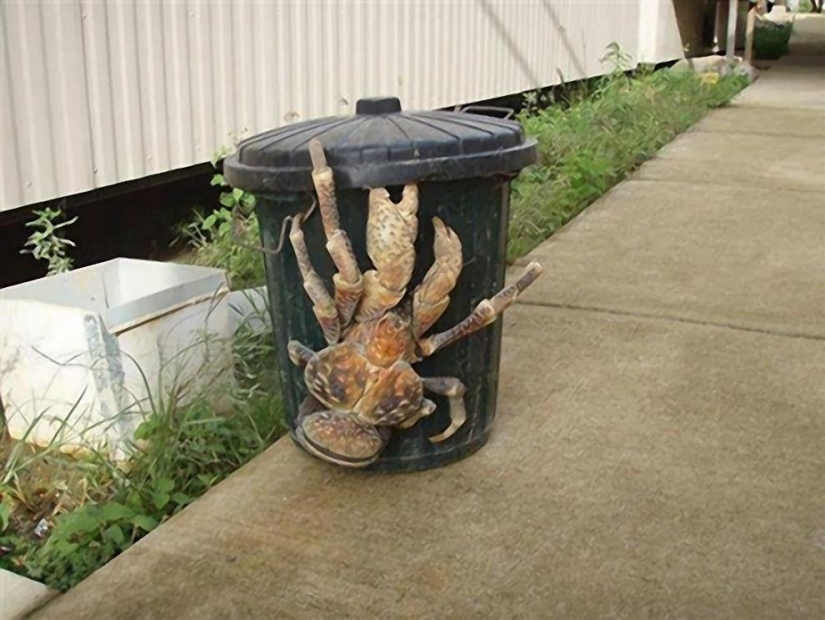
Recent articles

Twitter user @FactBuffet collects interesting facts about everything. Today we bring to your attention another series of facts that ...

Aomori Prefecture in the north of the Japanese island of Honshu is an agricultural region famous for its delicious apples. In ...

Imagine a baby vampire or a tiny zombie with glass eyes ... An artist from the USA Bean Shanine specializes in creating such ...